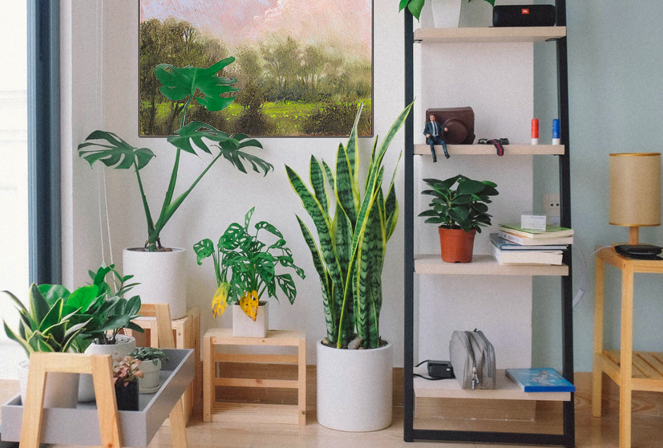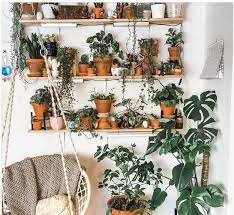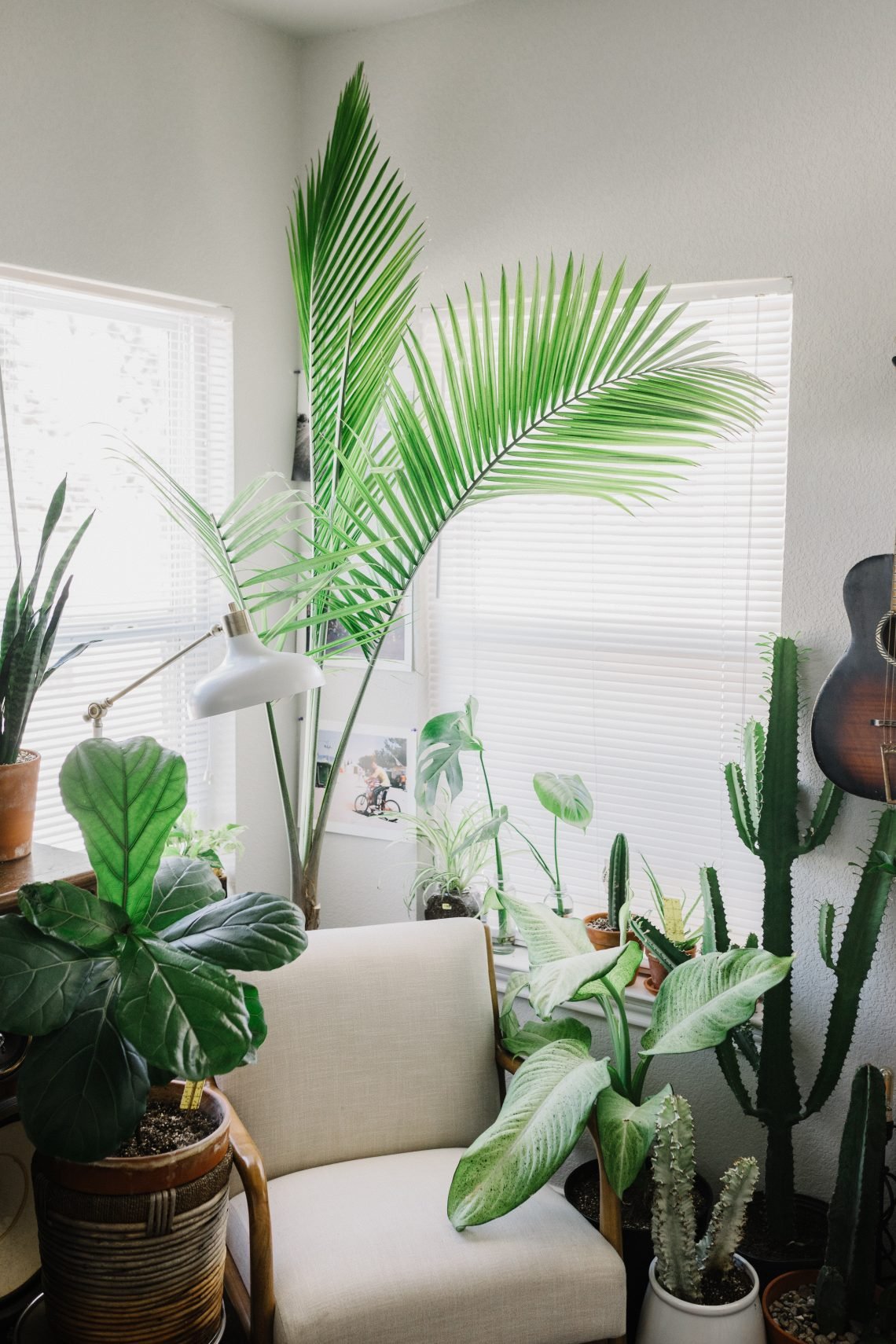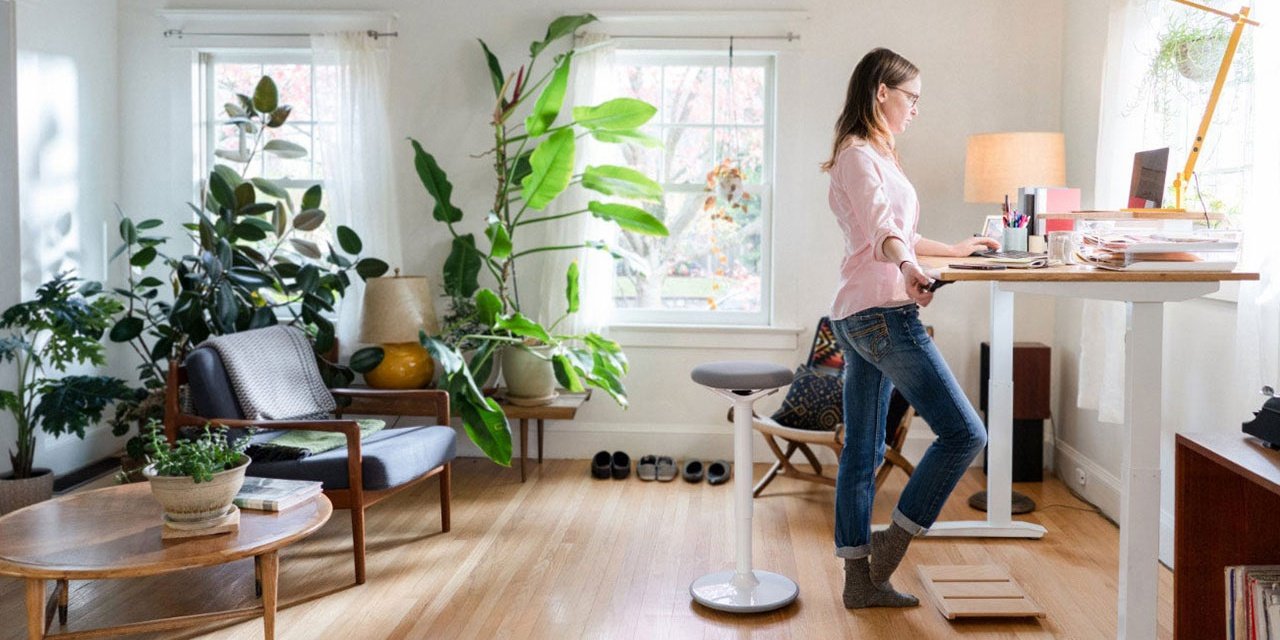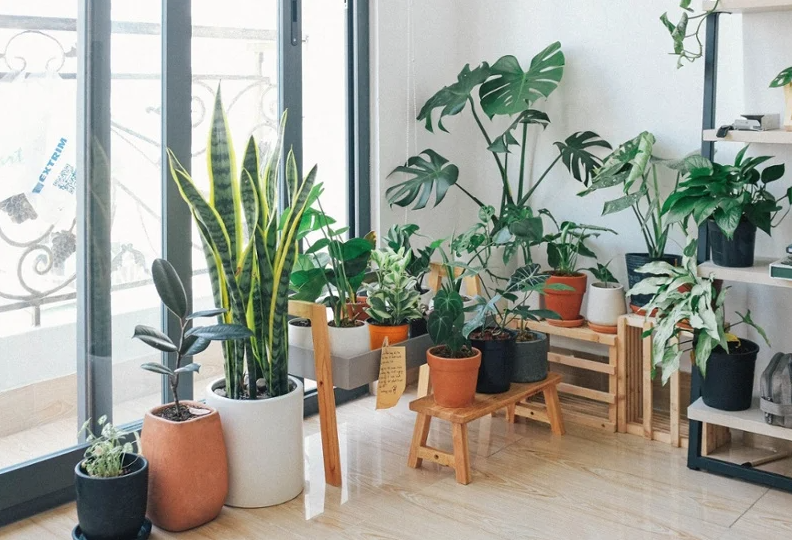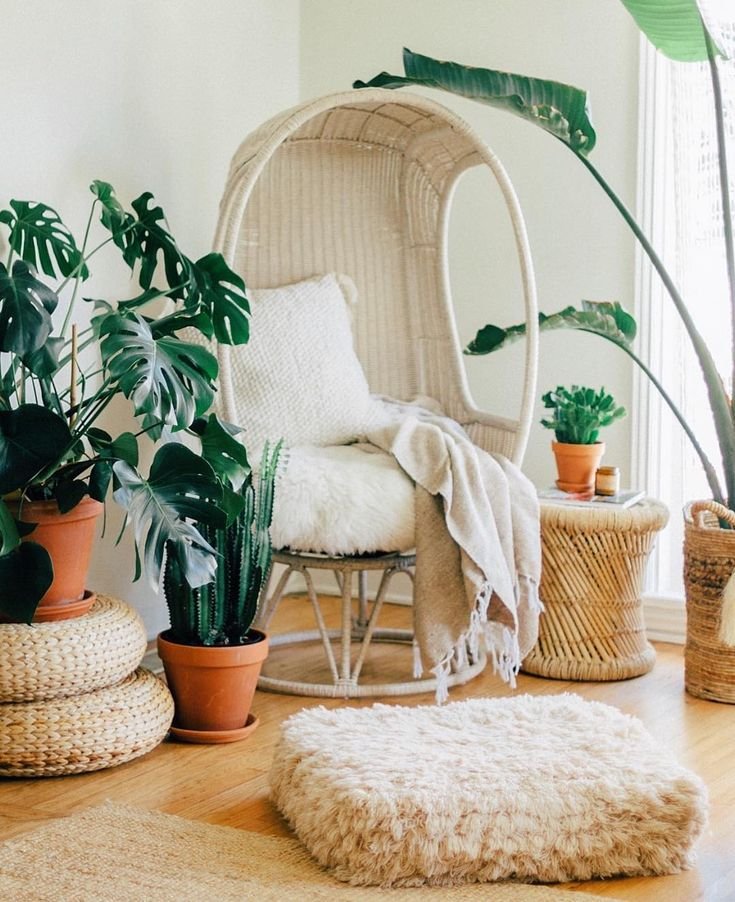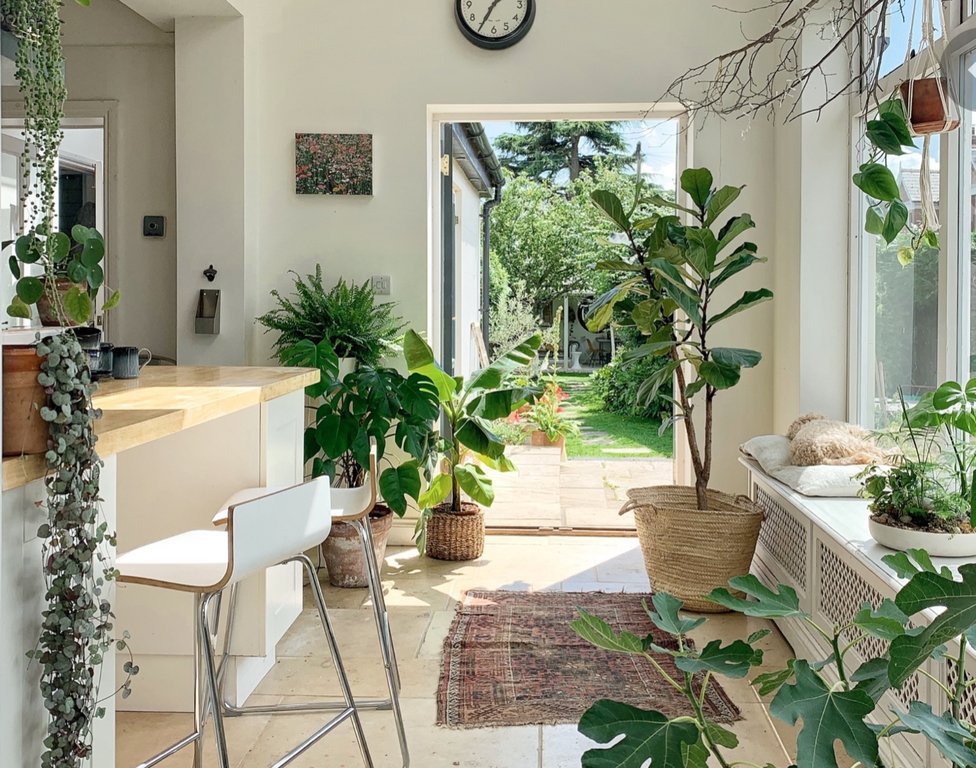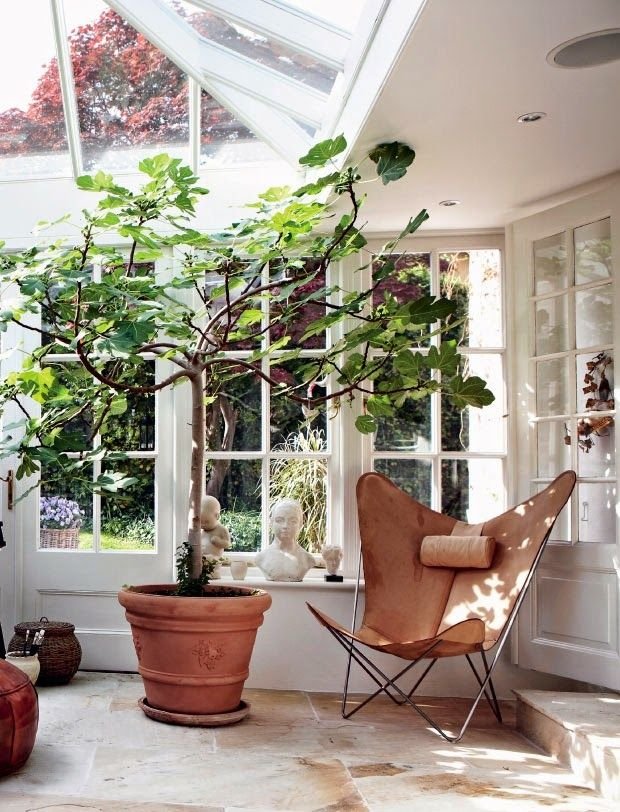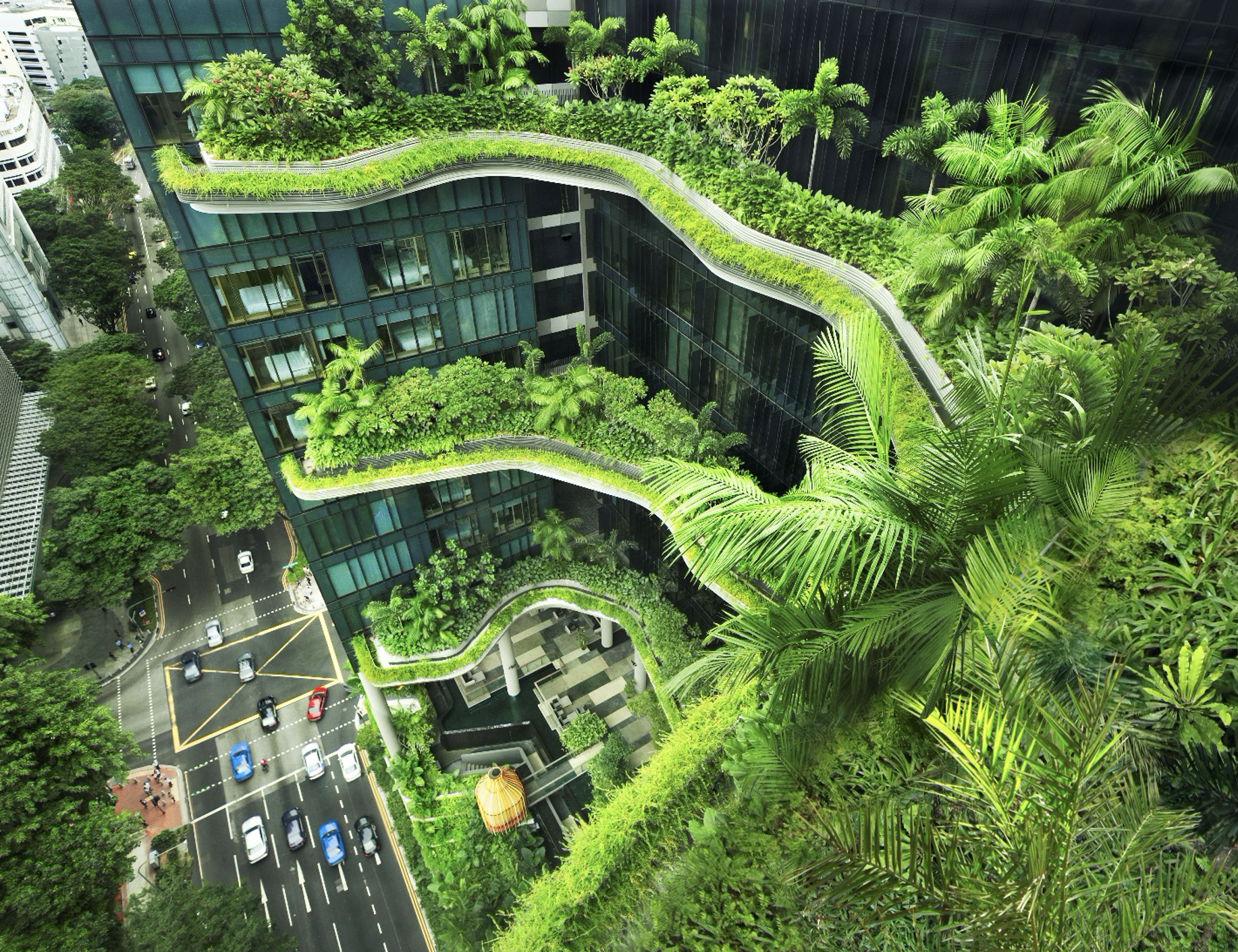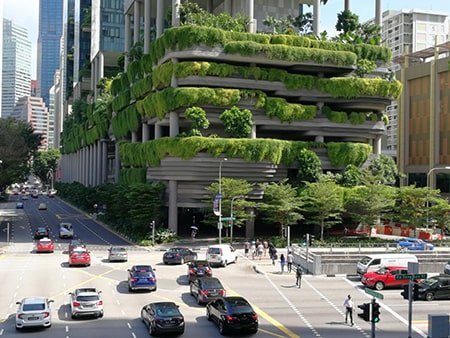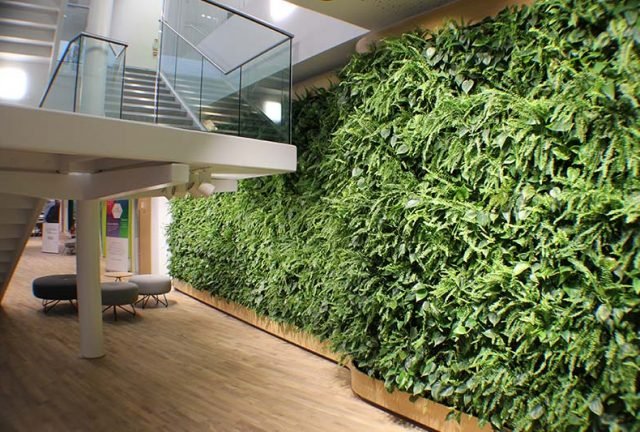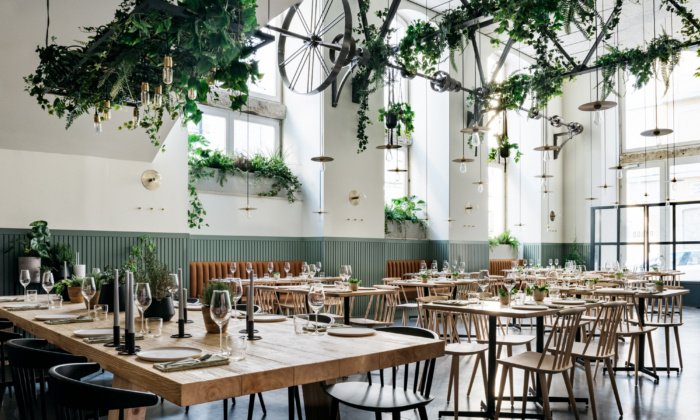Biophilic Design, what is it? According to pebblemag.com, “biophilic design is the practice of creating a closer connection to nature through the ways buildings and landscapes are created and built”. Derived from the term “biophilia” meaning “a love of nature”, this design principle is more than a trend.
The connection to nature through design can be achieved in many ways. Houseplants seem to be the first thing most people think of, but the design encompasses so much more than just indoor plants.
This isn’t necessarily a bad thing though, a single, green plant can completely transform a room!
Image Credit: Katherine Carter
Note: If you have curious paws in your household, it is a good idea to do research on the best plants to bring home. Many common houseplants are actually pretty toxic to dogs and cats! The ASPCA has a complete list of toxic and non-toxic plants for animals.
Biophilic design can include natural lighting and fresh air, neutral colors, water features, organic materials (sustainable wood, cork, bamboo, stone, rattan, etc.), and carefully selected decor choices that take our minds back to their most innate and primitive frame of reference: nature.
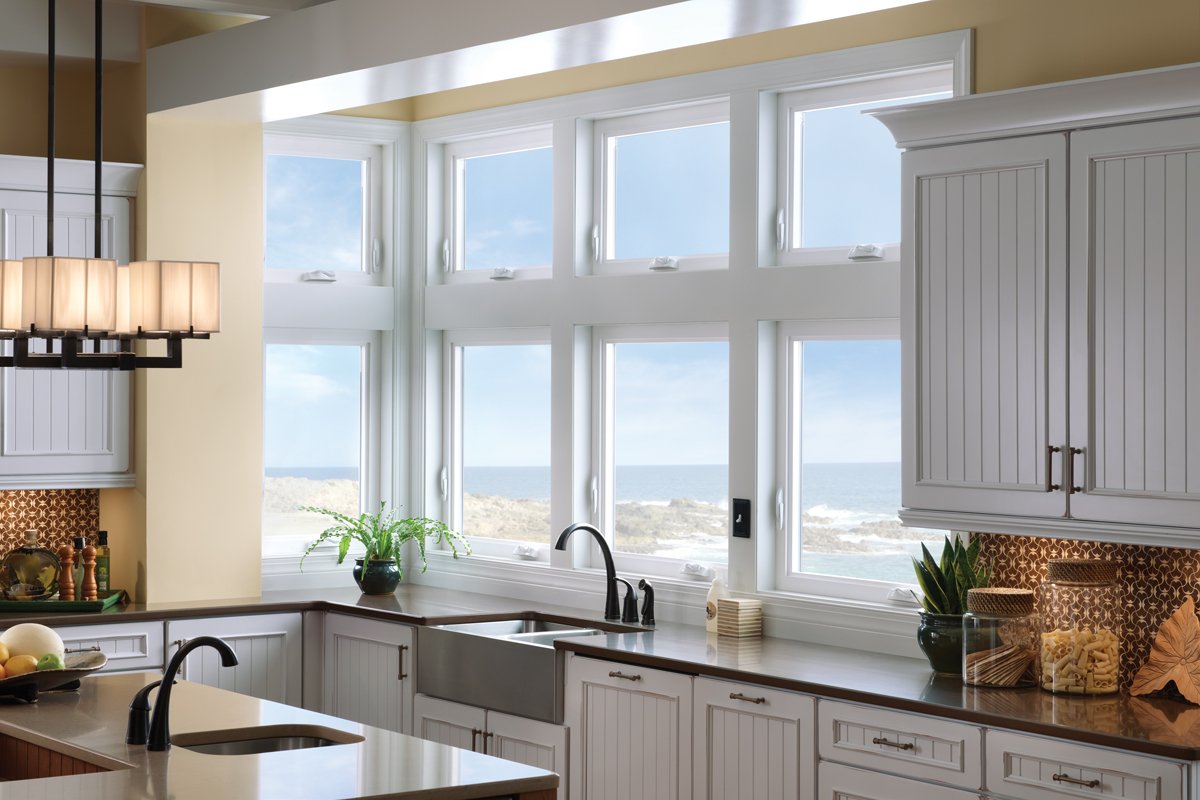
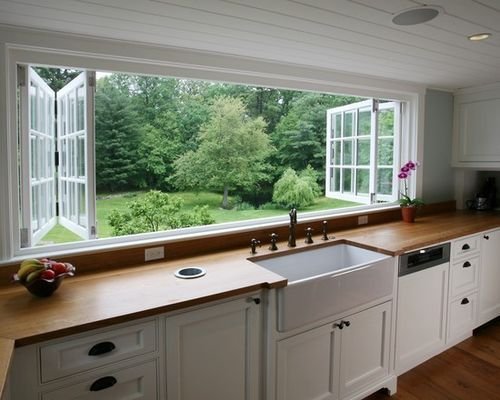
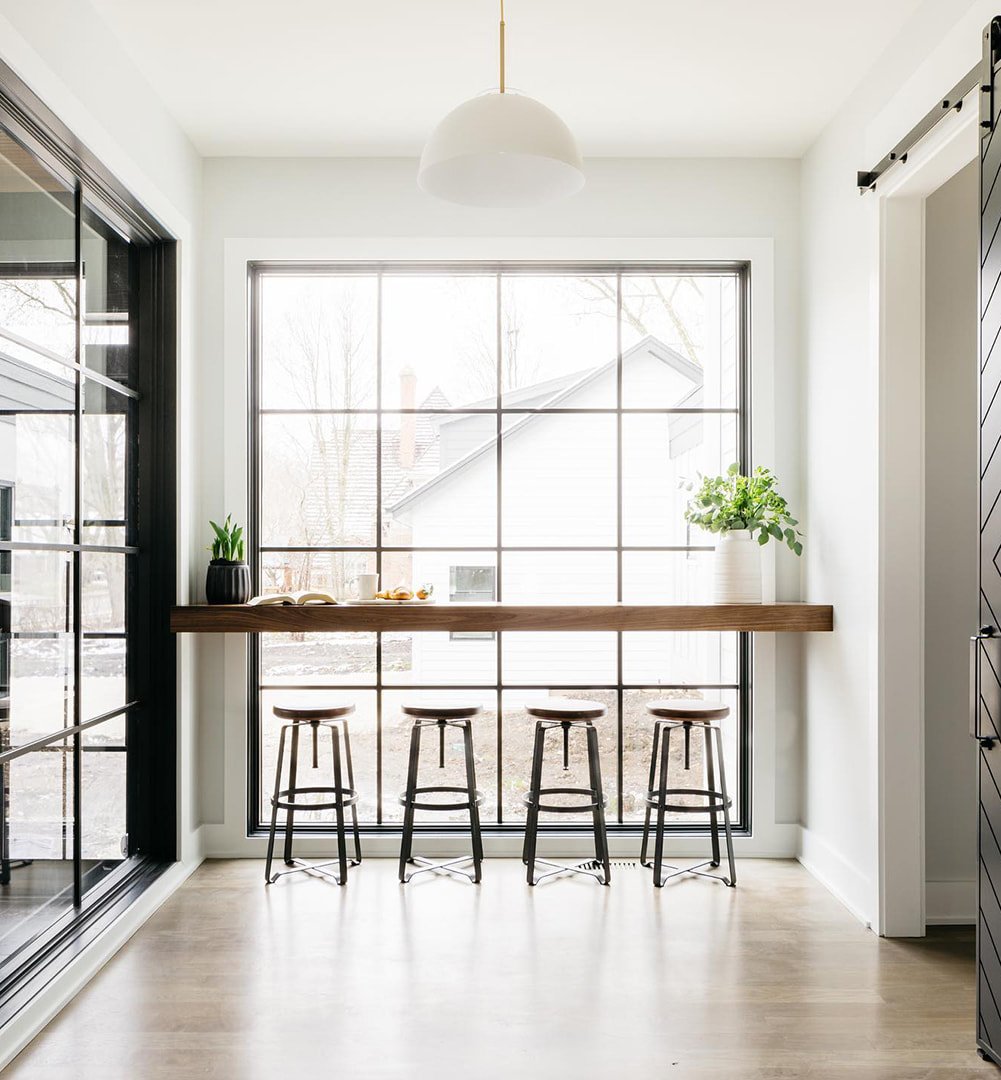
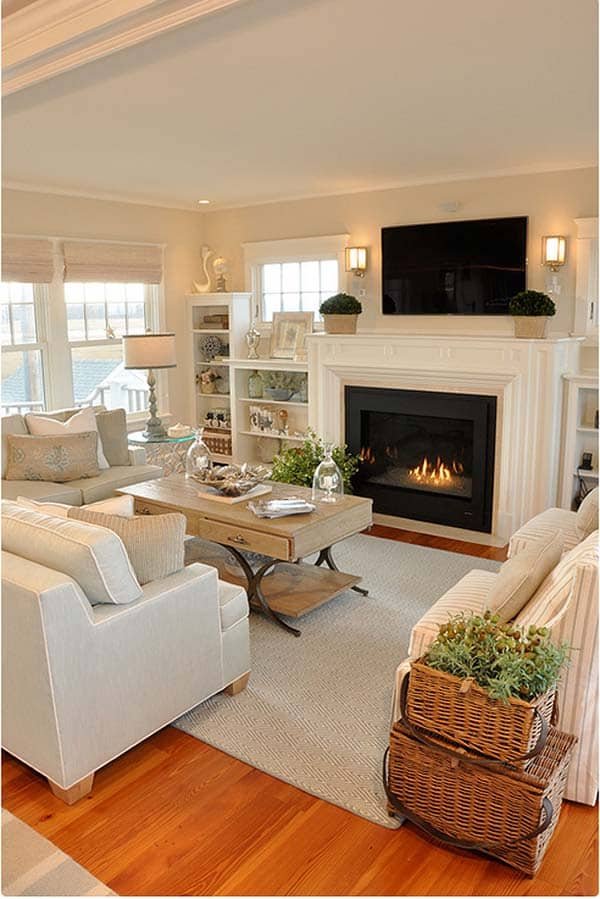

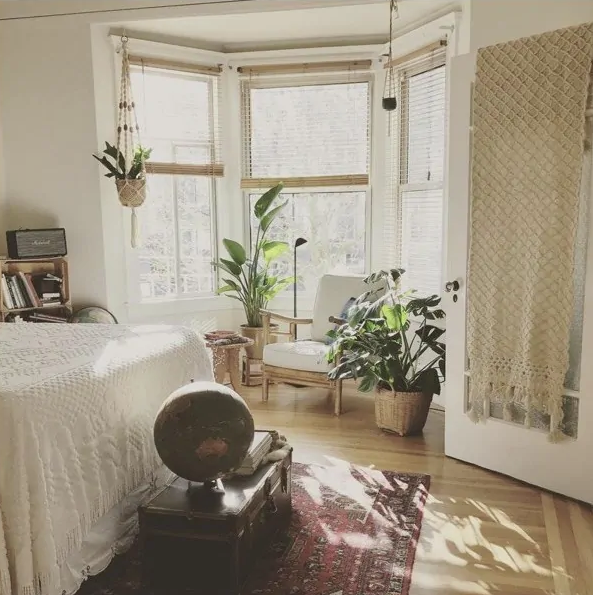
There are numerous benefits to biophilic design, including improved air quality, better moods, reduced stress levels, increased focus and engagement, higher productivity, and an overall improved sense of wellbeing.
Implementing biophilic design is easy, as it is a relatively neutral style that can be mixed with other interior design styles. It can be as simple as taking a few minutes to open the blinds each day, adding an indoor plant to to your office desk, and choosing sustainably sourced natural materials when looking for new furniture. With so many benefits, we will likely see more offices, schools, public areas, homes, and even cities create a closer connection to nature in the next few years.
According to the Global Wellness Summit, biophilia is not a passing trend, but rather the long-term future of architecture and design.
What do you think of this design style? Would you implement it in your home? How do you feel about seeing it in hotels, offices, and schools?


